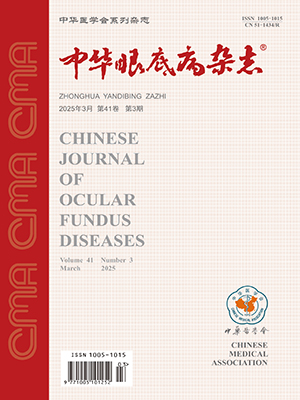Objective To observe the etiologies and vision outcomes of inpatients with no light perception (NLP). Methods A total of 367 inpatients (430 eyes) with NLP in Zhongshan Ophthalmic Center were enrolled in this study. The visual acuity examination followed the international standard methods. NLP was detected by torch light in a dark room and the pupil light reflection state was also considered. The patients included 208 males (235 eyes) and 159 females (195 eyes). Sixtythree patients (126 eyes) were bilateral and 304 patients (304 eyes) were unilateral cases including 159 right eyes and 145 left eyes. The patients' ages ranged from 2.5 to 86.0 years, with a mean age of (40.85 plusmn;18.03) years. All the patients were treated according to their diseases. The ratio of different eye disease and visual outcome were recorded and analyzed. Results Among 430 eyes, there were 157 eyes (36.5%) with optic neuritis, 68 eyes (15.8%) with uveitis, 54 eyes (12.6%) with retinal vascular disease, 35 eyes (8.1%) with ischemic optic neuropathy, 29 eyes (6.7%) with traumatic optic neuropathy, 28 eyes (6.5%) with optic atrophy, 18 eyes (4.2%) with trauma, 17 eyes (4.0%) with radiation optic neuropathy, 10 eyes (23%) with glaucoma, five eyes (1.2%) with retinal detachment, four eyes (0.9%) with compressive optic neuropathy, two eyes (0.5%) with orbital apex syndrome, two eyes (0.5%) with hysteria, and one eye (0.2%) with orbital cellulitis. After active treatment, 269 eyes (62.6%) remained NLP, 161 eyes (37.4%) got improved visual acuity, including light perception- 0.02 in 74 eyes (17.2%), ge;0.02-<0.05 in 25 eyes (5.8%), ge;0.05 -<0.1 in 14 eyes (3.3%), ge;0.1 -<0.3 in 11 eyes (2.6%) and ge;0.3 in 37 eyes (8.6%). Conclusions The main causes of nonsurgical and non-trauma NLP are retinal disease and optic neuropathy. Some patients with NLP may restore useful vision if they received prompt referral and active intervention.
Citation: 杨晖,王伟,龙云峰,易长贤,张秀兰. Etiologies and vision outcomes of 367 inpatients with no light perception. Chinese Journal of Ocular Fundus Diseases, 2012, 28(6): 606-609. doi: Copy
Copyright © the editorial department of Chinese Journal of Ocular Fundus Diseases of West China Medical Publisher. All rights reserved




